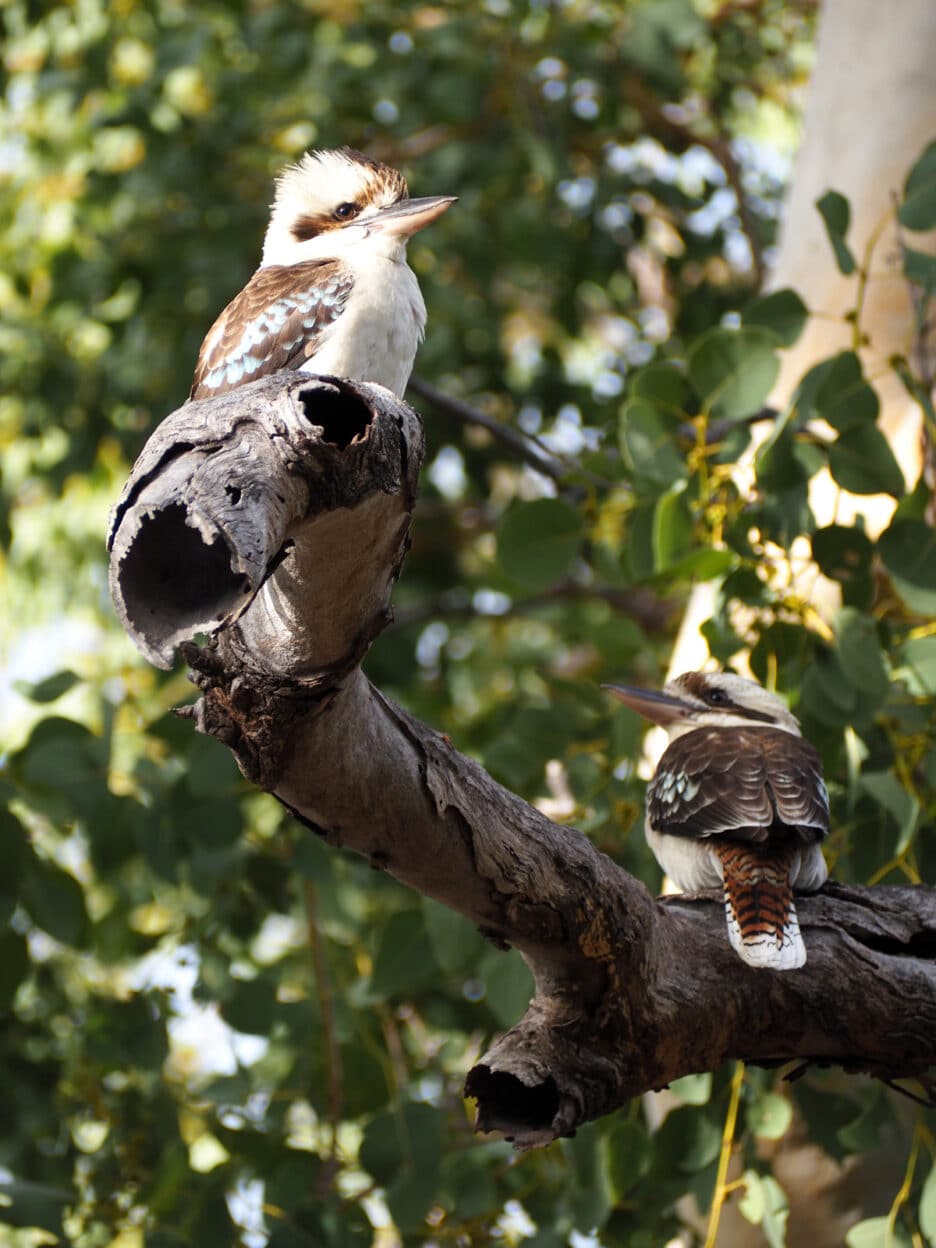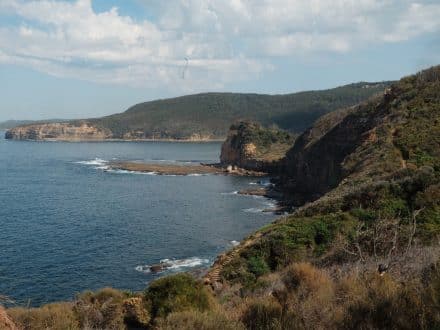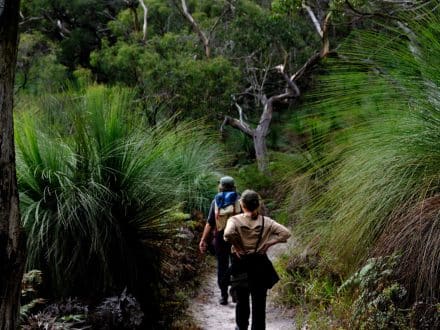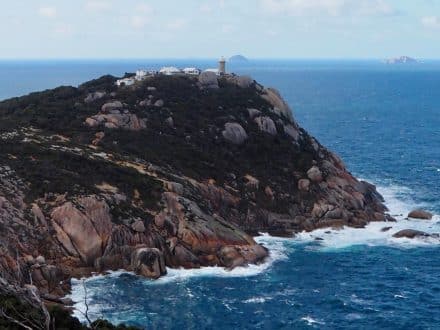With 23 different bays and coves to explore, and flying under the radar of the big Queensland destinations, you’ll never be happier to get lost in paradise while walking this stunning national park.
Like other Australian continental islands such as Whitsunday Island or Hinchinbrook Island, Magnetic Island offers beautiful beaches for a refreshing plunge after a hike through an engrossing environment. The compelling aspect of this striking World Heritage-listed island, just five kilometres from Townsville, is the ease of access via a regular ferry service. There is a myriad of day hikes and short walks through a range of tropical ora to be had on Magnetic. This island has attracted tourists since the late 1800s and today there is a variety of accommodation to choose from. Small discrete hamlets are nestled in picturesque bays with quaint shacks and modest Queenslanders to rent. The best time to visit this dry tropical region of Queensland is between April and October to avoid the heat and the stingers in the ocean. Most of the treks are walks with purpose, either to snorkel on a reef fringing a sheltered bay or to climb a peak to catch sunrise or sunset, or to spend a day exploring a remote beach and observing raptors gliding above the hoop pines on precipitous cliffs.
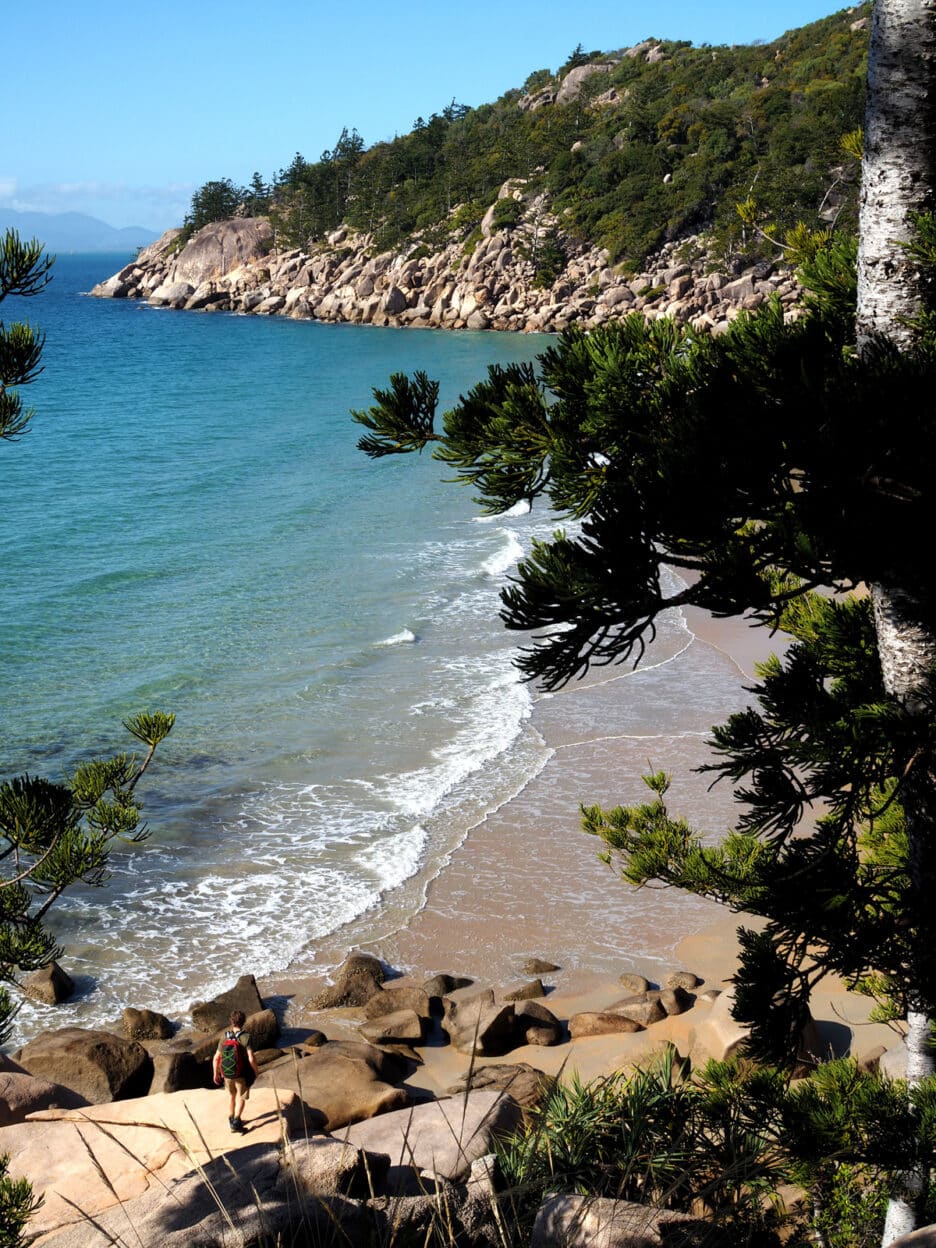
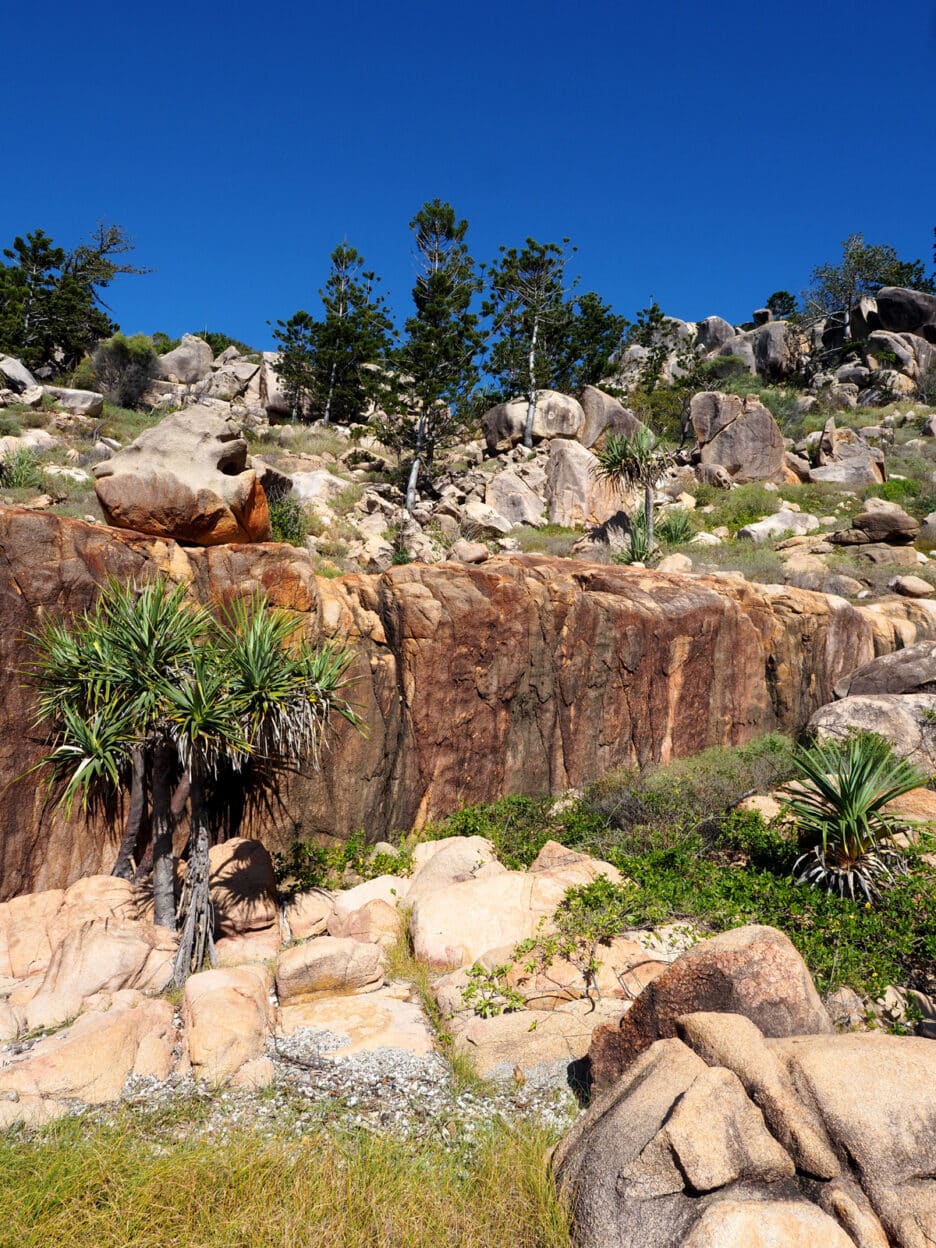
Our favourite hike was from the eastern end of Horseshoe Bay crossing a stream and heading up the ridge between massive granite tors to Balding Bay. The path snakes down from the saddle past the turnoff to Radical Bay where the aquamarine ocean is revealed through the strangler figs and sheoaks with the deep water bay inviting us sweaty hikers.
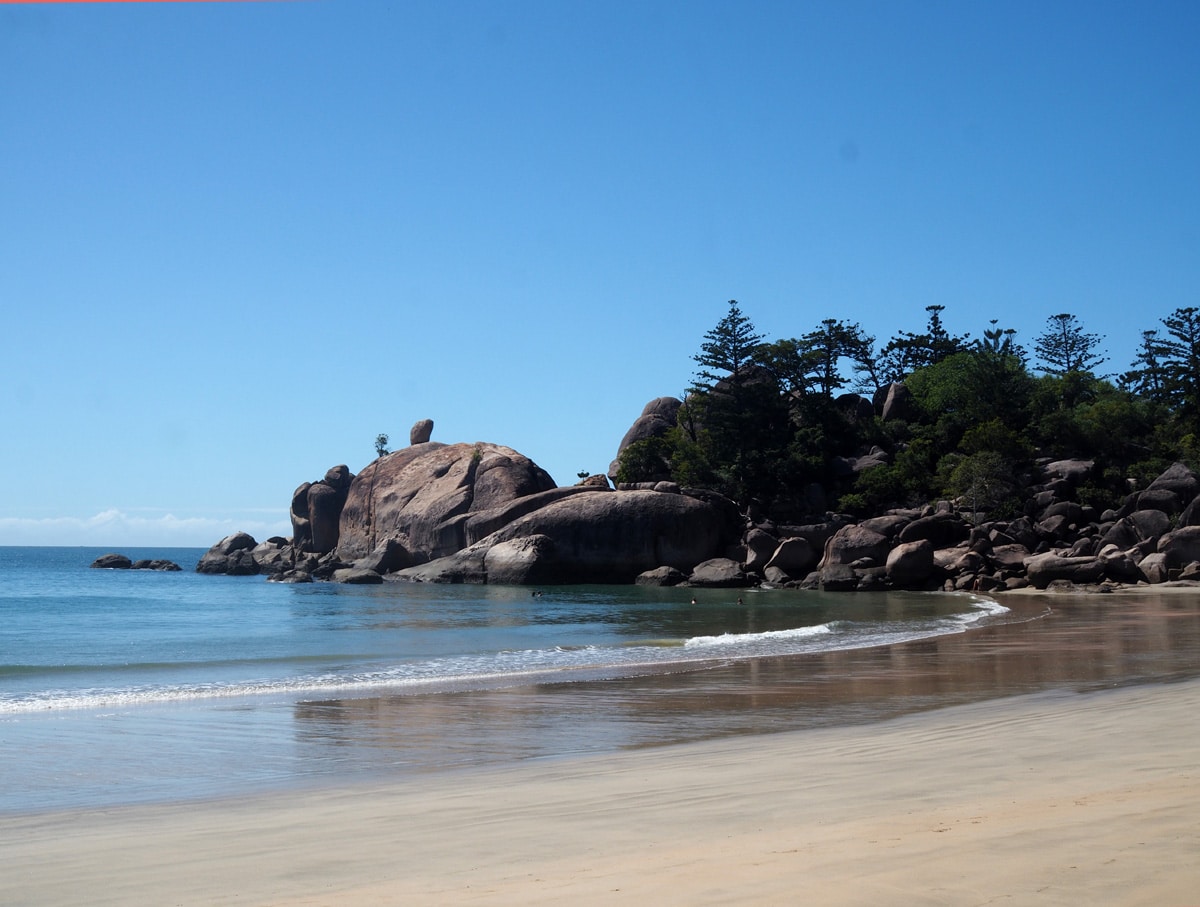
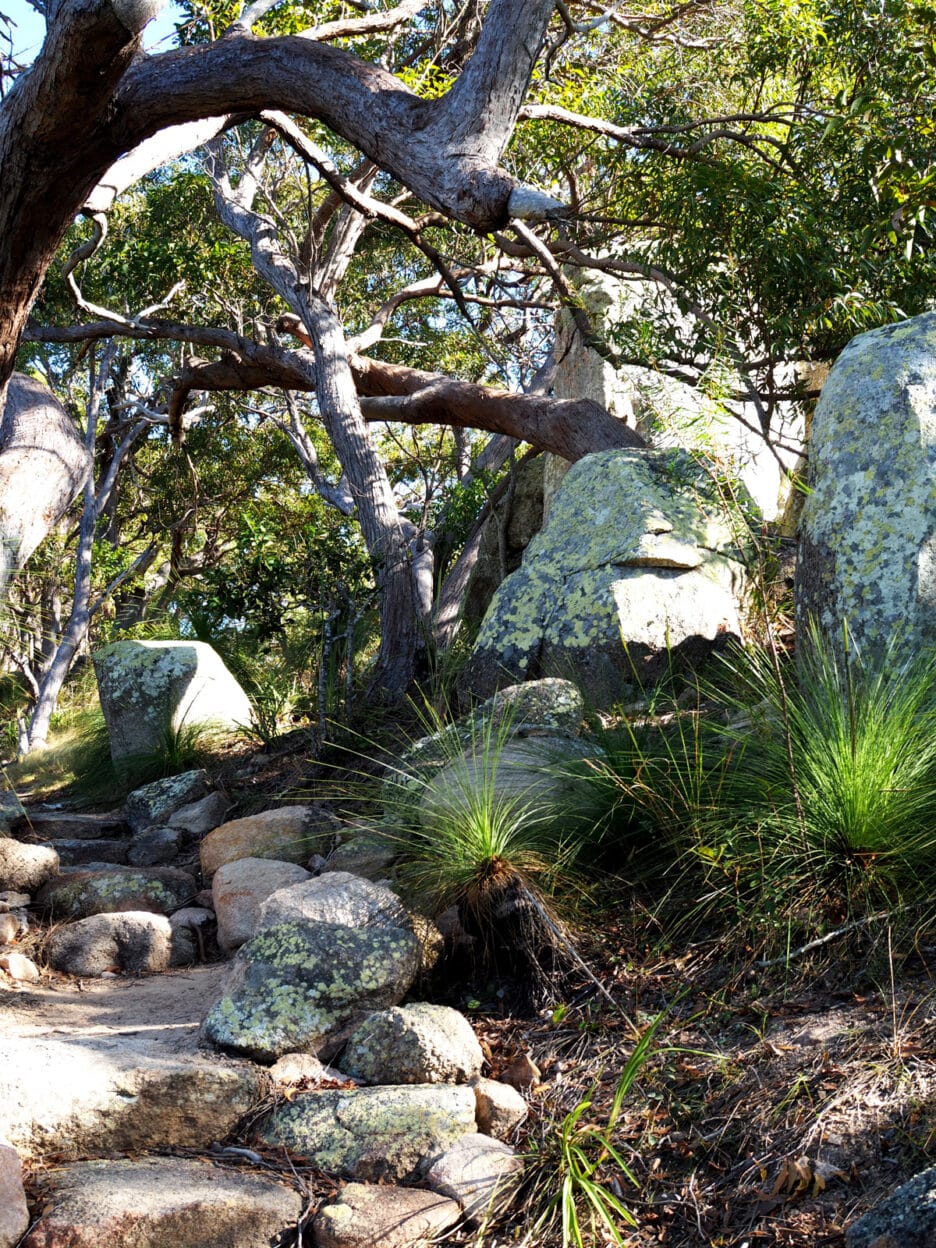
A rather different walk is from Nelly Bay through remnant dry rainforest and up the ridge into the national park and leading on to Arcadia before looping back via the coast hugging Gabul (carpet python) Way. This two-hour walk is best done early before it gets too warm when you can experience the full birdsong chorus high on the ridge looking to the north over Horseshoe Bay. A 200-metre side track leads past grass trees and through the open eucalypt woodland to the Sphinx Lookout with a view down to the protected Alma Bay.
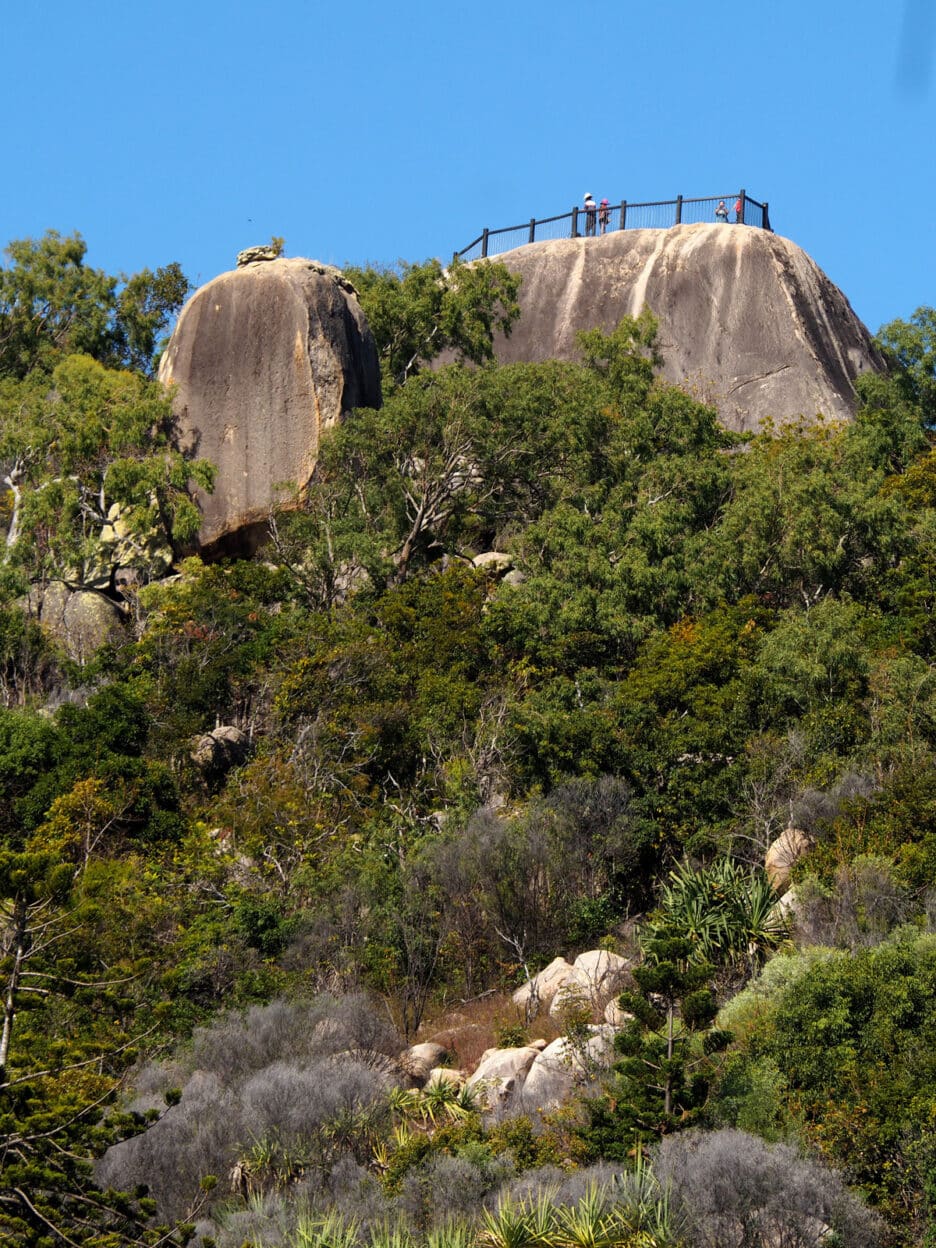
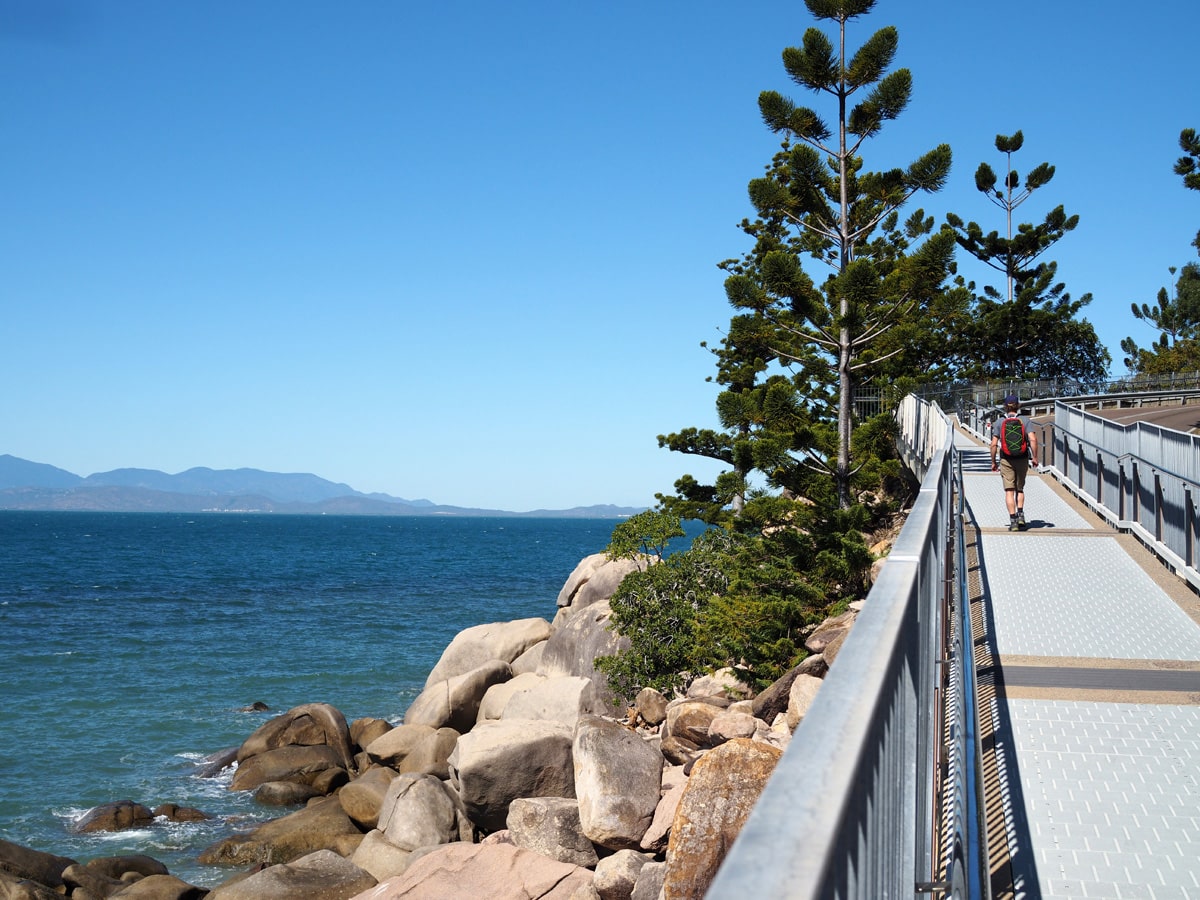
The Forts Walk is a day outing and packing snorkelling gear is highly recommended. From the Forts Junction car park we took the path leading past historic Arthur Bay and on to Florence Bay. Here the coral reef on the northern side is home to a variety of sh while on the southern shore you may be fortunate to bump into Shelley the resident sea turtle or witness migrating humpback whales out to sea. From the bay there is a new track leading steeply to the World War II forts that were built to forewarn Townsville of enemy attack. As expected, the views are expansive back to the mainland and out towards Palm Island. Heading back down, keep an eye out for koalas feeding or snoozing in the treetops.
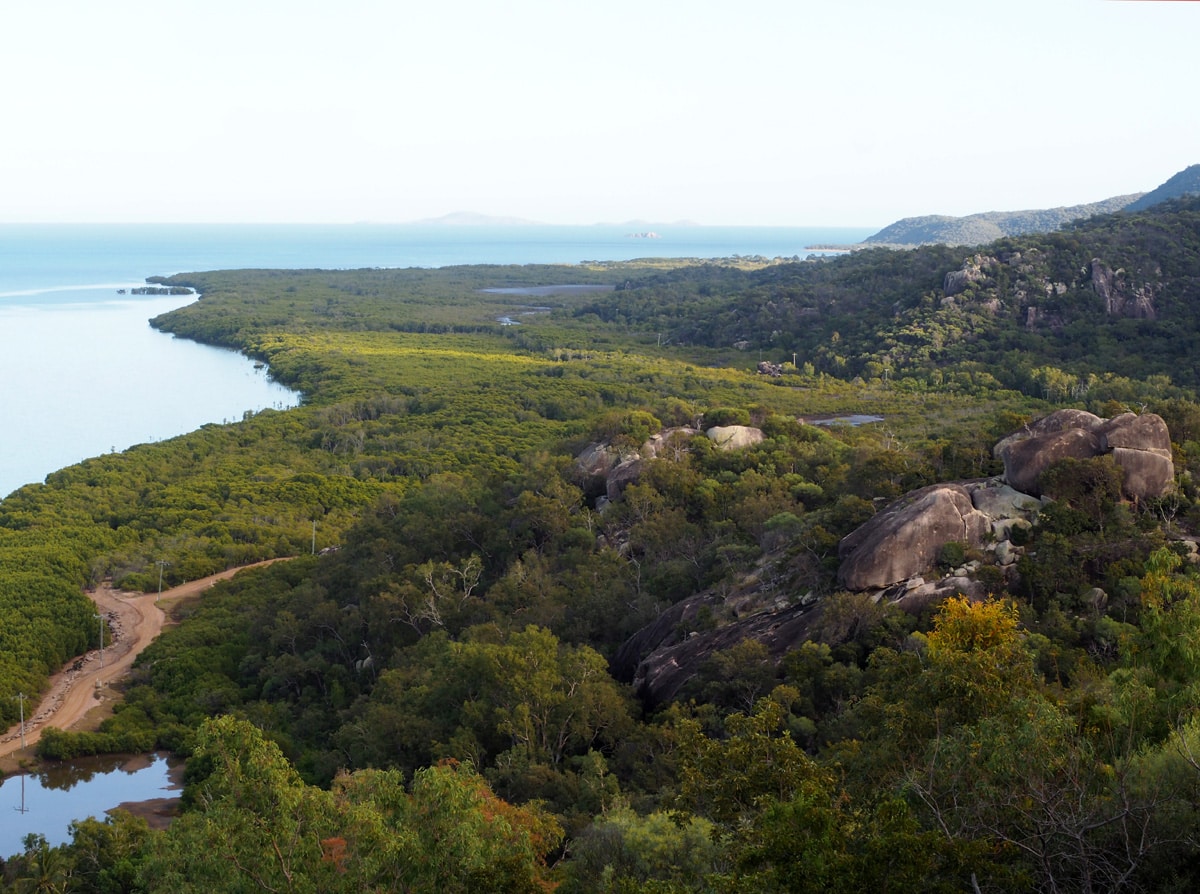
Picnic Bay was identified as an ideal place for Townsville tourists as far back as the late 1800s. Its first hotel with accommodation was built in 1899 with a jetty constructed for visiting boats. From this small town there are some short walks with fantastic views.
The sunrise is best seen from Hawkings Point reached via a track hugging a sheer granite wall.
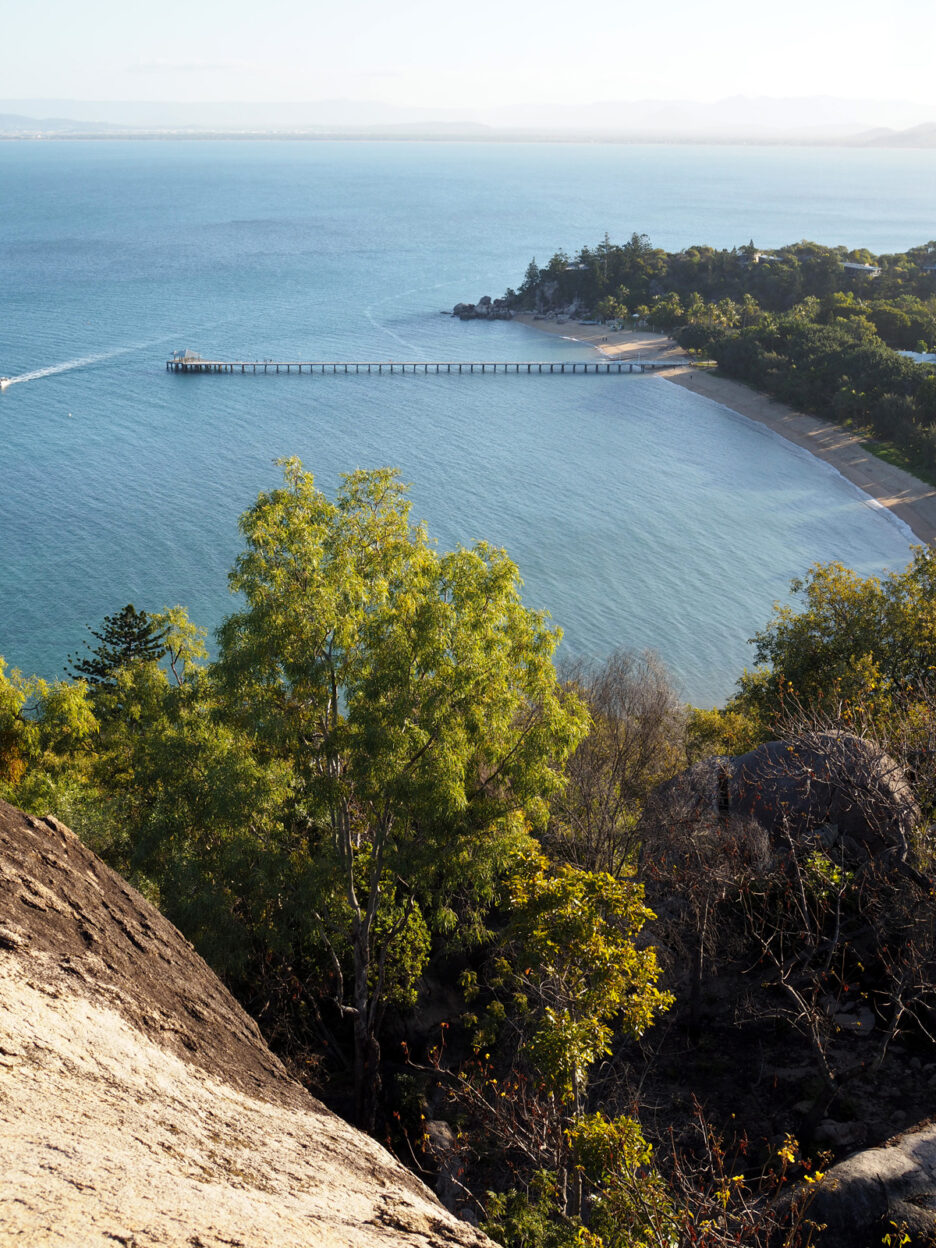
On the eastern side of the bay, head to Sails Rock Lookout following a track past the town’s water storage. The sunset view from the peak is down to Cockle Bay, the mud flats and mangroves of Bolger Bay Conservation Park, and to West Point in the shimmering haze.
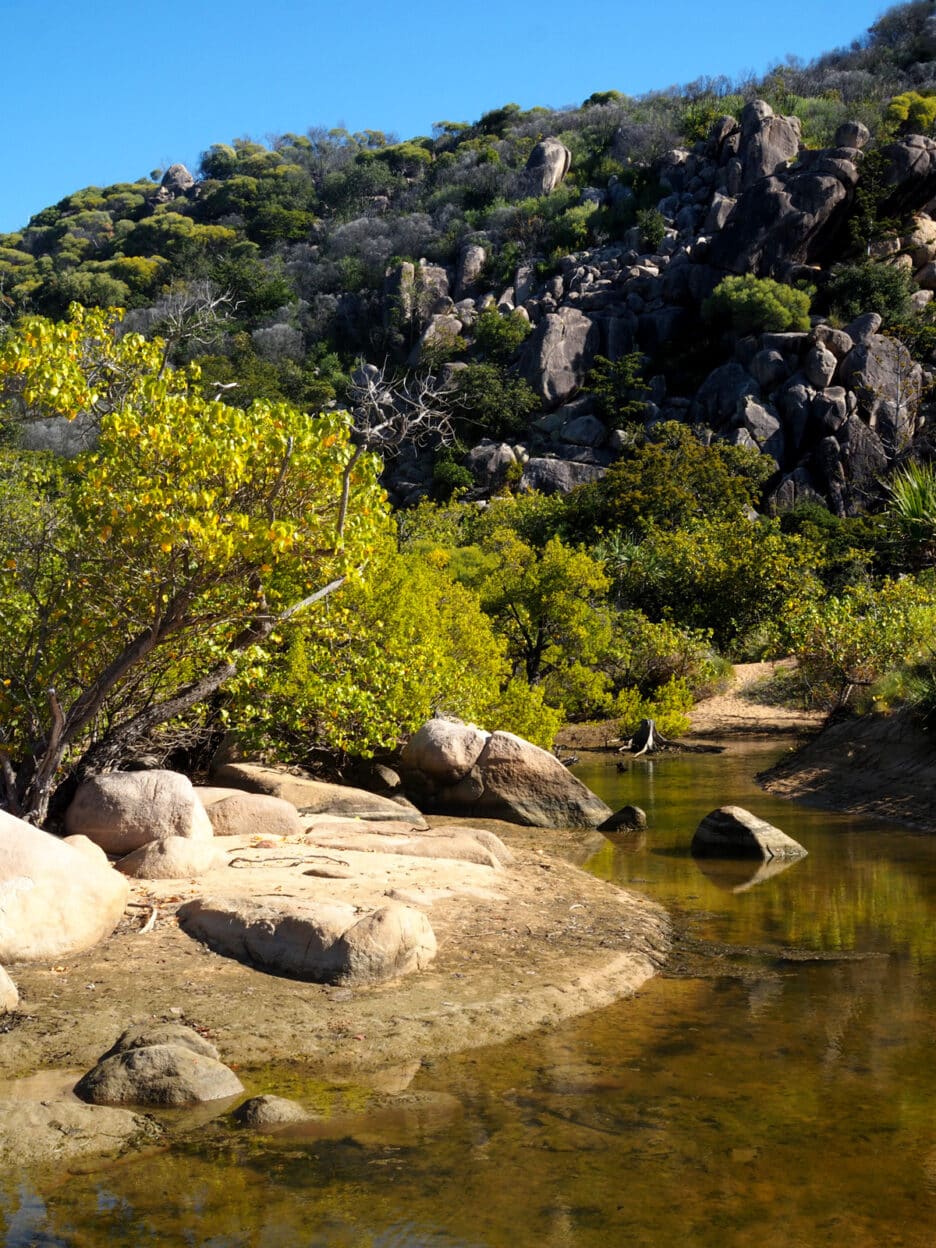
This laidback island loved by the old timers provides intermediate and family-friendly walks in a photogenic setting. The locals rightly love to boast of the amount of hours of winter sunshine to be had here. After several days you will be well refreshed and cruising on island time in this sweet, low-key and stunning location.

